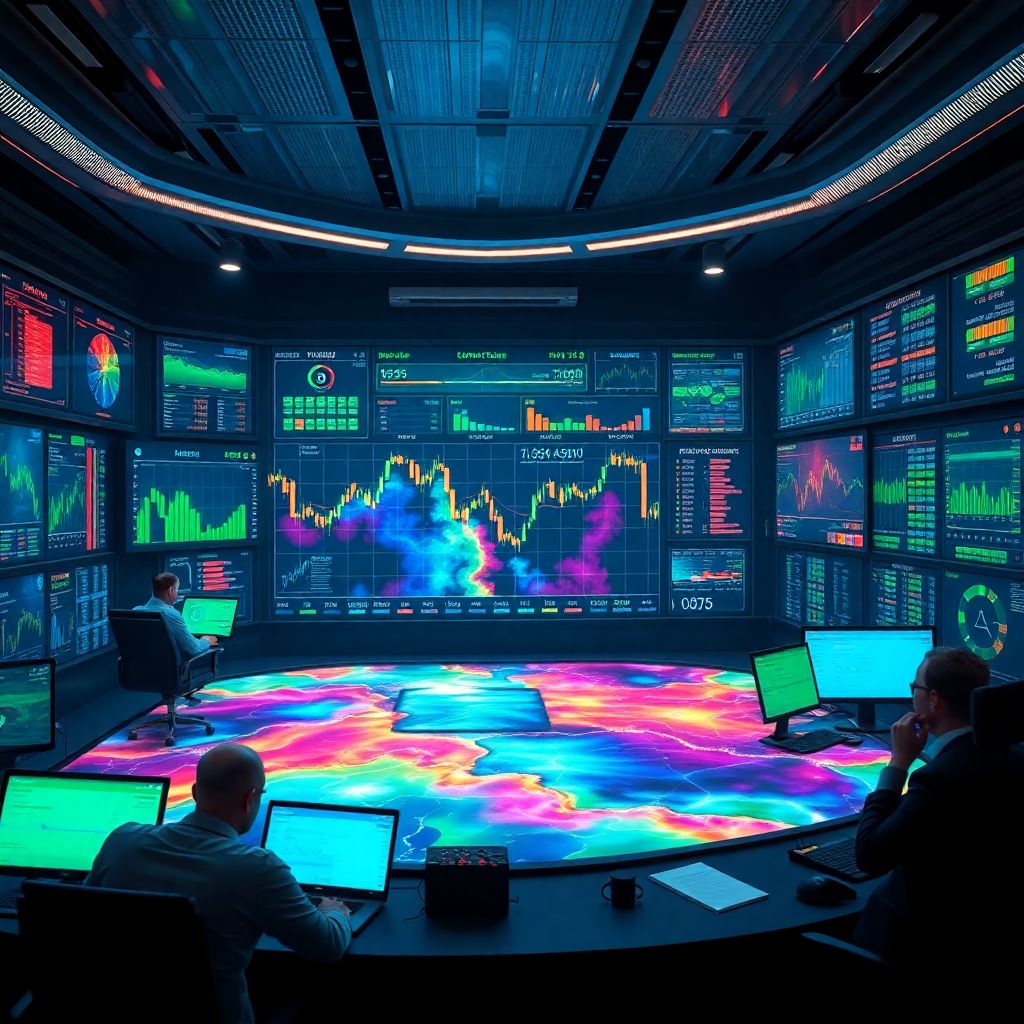Historical Background
Before the digital revolution took over the financial world, spotting sector rotations was more art than science. Traders relied heavily on news flow, gut instinct, and rudimentary moving averages. The concept of sector rotation itself isn’t new—it dates back to early technical analysis theories from the 1930s, where market cycles were loosely tied to economic cycles. But it wasn’t until the late 2000s, with the rise of algorithmic trading and widespread access to options data, that traders began to quantify and visualize these shifts more precisely.
Open Interest (OI) started gaining attention as a key metric—not just for options market depth but as a sentiment indicator. Fast forward to the 2020s, and with the explosion of data visualization tools and platforms, OI heatmaps emerged as a powerful method to see where the “smart money” is flowing across sectors. By 2025, these heatmaps have become a staple in the toolkit of advanced retail and institutional traders alike.
Core Principles of OI Heatmaps

At its core, an OI heatmap is a visual representation of where the most open interest is concentrated. Think of it as a thermal camera for the options market. The “heat” in each sector indicates how much capital is being positioned via options—calls or puts. When segmented by sector, it allows traders to see which industries are attracting the most attention, and more importantly, where that attention is shifting over time.
In today’s markets, OI is no longer looked at in isolation. Advanced heatmaps consider multi-dimensional data: changes in OI (daily, weekly), implied volatility, skew, and even gamma exposure. The goal? To catch sector rotations early, before price action confirms the move. For example, a spike in call OI in the semiconductor sector, paired with increasing volume and rising implied volatility, might hint at bullish sentiment even before the sector ETF breaks resistance.
Modern Trends in 2025
In 2025, the use of AI-enhanced OI heatmaps has taken the game to a whole new level. Platforms now automatically flag unusual buildups in specific sectors and correlate those with macroeconomic indicators, earnings cycles, and geopolitical events. For instance, during Q2 2025, there was a noticeable rotation from defensive utilities into AI infrastructure stocks. Sophisticated OI heatmaps visualized this in real-time, showing rising call interest in companies like Supernova AI Systems and QuantumLink Corp, days before their breakout.
Another major trend is the integration of real-time social sentiment with OI data. Retail flows—especially from zero-day options (0DTE)—are now layered into heatmaps. This helps separate institutional positioning from speculative noise. Traders can now filter heatmaps to show only “high conviction” positions, where OI is sustained and increasing over multiple expiries.
Real-World Examples

Let’s take a practical example. In early 2025, the energy sector was under pressure due to falling crude prices. However, OI heatmaps began flashing green on clean energy and battery technology stocks. A deeper dive showed a sudden rise in long-dated call positions on companies like VoltEdge and CleanCell. Within two weeks, the sector rallied over 12%, confirming the rotation.
Another case was in late 2024, when traditional financials began to lose steam. At the same time, OI heatmaps showed increasing activity in fintech and decentralized finance sectors. Traders who monitored these rotations early were able to shift exposure from legacy banks to emerging players like ChainBank and LiquiFi, capitalizing on double-digit sector outperformance.
Common Misconceptions
One of the biggest myths is that high OI always means bullish sentiment. That’s not true. OI simply indicates that a lot of contracts are open—it doesn’t say whether they’re bullish or bearish. A spike in put OI could mean hedging or outright bearish bets. Without context—like price movement, volatility trends, and volume—OI can be misleading.
Another common mistake is assuming that rotations happen instantly. Sector rotations are often gradual and evolve over weeks. Heatmaps give early clues, but they require confirmation. Jumping in too early based solely on OI can lead to false starts. Patience and cross-referencing with other indicators like relative strength and macro trends are key.
Lastly, some traders mistakenly believe that all OI is equal. But OI from institutional block trades carries more weight than retail-driven 0DTE speculations. Modern heatmaps in 2025 help filter this noise, but users must understand the source and intent behind the data to use it effectively.
Final Thoughts
OI heatmaps by sector have evolved from simple visual tools into dynamic, AI-powered systems that offer real-time insights into market sentiment and capital rotation. In 2025, staying ahead of sector moves isn’t just about chart patterns or earnings beats—it’s about identifying where the market is placing its bets, often before the headlines catch up. Whether you’re a swing trader, portfolio manager, or data-driven investor, integrating OI heatmaps into your workflow can provide that critical edge in a market governed by speed, complexity, and ever-shifting narratives.

